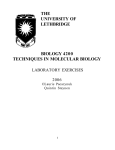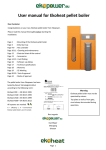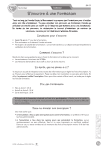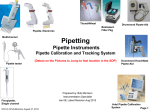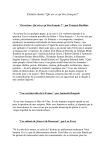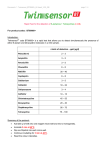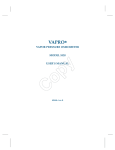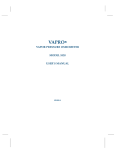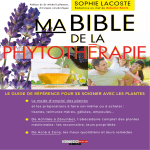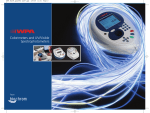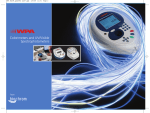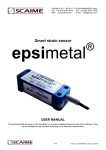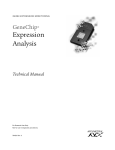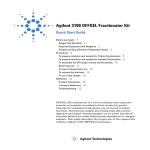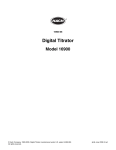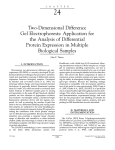Download Appendices
Transcript
1 GUIDELINES FOR SAFETY PROCEDURES EMERGENCY NUMBERS City Emergency 9-911 Campus Emergency 2345 Campus Security 2603 Student Health Centre 2484 (Emergency - 2483) THE LABORATORY INSTRUCTOR MUST BE NOTIFIED AS SOON AS POSSIBLE AFTER THE INCIDENT IF NOT PRESENT AT THE TIME IT OCCURRED EMERGENCY EQUIPMENT: Know the location of the following equipment which will be indicated to you at the beginning of the first lab: 1) Closest emergency exit 2) Closest emergency telephone and emergency phone #'s 3) Closest fire alarm 4) Fire extinguisher and explanation of use 5) Safety showers and explanation of operation 6) Eyewash facilities and explanation of operation. 7) First aid kit GENERAL SAFETY REGULATIONS 1) Eating and drinking are prohibited in the laboratory. 2) Always wash your hands prior to leaving the laboratory. 3) Laboratory coats are required for all laboratories. 4) Report equipment problems to instructor immediately. 5) Report all spills to the instructor immediately. 6) Long hair must be kept restrained to keep from being caught in equipment, Bunsen burners, chemicals, etc. SPILLS Spill of ACID/BASE/TOXIN: Contact instructor immediately! BACTERIA/VIRUS SPILLS: If necessary, remove any contaminated clothing. Prevent anyone from going near the spill. Cover the spill with dilute bleach and leave for 10 minutes before wiping up. DISPOSAL 2 Upright Cardboard Boxes: CLEAN LAB GLASSWEAR - broken glass, Pasteur pipets; NO CHEMICAL, BIOLOGICAL, OR RADIOACTIVE MATERIALS Biohazard Bags: Petri plates, microfuge tubes, tips. All of this material will be autoclaved prior to disposal. BACTERIAL OR VIRAL LIQUID: Tubes and flasks containing liquid cultures are placed in marked trays for autoclaving. LIQUID CHEMICALS: Place in labeled bottle 3 THE UNIVERSITY OF LETHBRIDGE Policies and Procedures Occupational Health and Safety SUBJECT: CHEMICAL RELEASE PROCEDURE Precaution must be taken when approaching any chemical release. 1. Unknown/Known Release • • • • • Clear the area Call Security 2345 Do not let anyone enter the area Call Utilities at 2600 and request the air be turned off at the release site Security will immediately notify: Chemical Release Officer: 331.5201 Occupational Health and Safety: 394.8937 394.8716 EMERGENCY CALL LIST 0800 – 1600 2345 331-5201 2301 394.8937 394.8716 SECURITY CHEMICAL RELEASE OFFICER ADMIN. ASSISTANT OCCUPATIONAL HEALTH AND SAFETY EMERGENCY CALL LIST 1600 -0800 2345 SECURITY 331-5201 CHEMICAL RELEASE OFFICER 394-8937 OCCUPATIONAL HEALTH AND 394-8716 SAFETY IF THE CHEMICAL RELEASE OFFICER CANNOT BE LOCATED CALL: 328-4833 DBS If the area must be evacuated all employees will be evacuated to the North Parking Lot. 4 APPENDIX 1 - ASEPTIC TECHNIQUE Purposes: 1) To prevent the contamination of the environment and people working in the laboratory from the cultures used in the exercises. 2) To prevent accidental contamination of cultures of microorganisms and of solutions and equipment used in the laboratory Correct methods of handling cultures and apparatus will be demonstrated. These methods should be followed. Consider carefully and remember the following points: -Prior to starting any work in the laboratory, wash hands with soap, and wash down bench area using 10% bleach. This procedure should be repeated after the lab is complete. -Avoid working on your lab book or lab notes. -Clean laboratory coats must be worn. If you have long hair, tie it back before working in the laboratory environment. -Eating or drinking are not permitted in the laboratory. Do not place pencils, fingers or anything else in your mouth. -Clean air contains many bacteria and fungal spores carried on dust particles or in water droplets. Any surface exposed to air quickly becomes contaminated. If material is to be kept sterile, it should be exposed only as much as is absolutely necessary for manipulation. -Plugs and caps of tubes, tops of Petri dishes and bottles of solutions, (even water!!) must not be laid on the bench nor must sterile containers and cultures be left open and exposed to the air. INOCULATION OF CULTURE TUBES Again, the important thing to remember is that exposure of sterile liquids or bacterial cultures to air must be minimised. -Ensure that you have the tubes, plate of inoculum, inoculating loop and a sterile tube of medium available within easy reach. -Flame the inoculating loop until red hot. When removing inoculum from a tube, remove the cap from the tube by grasping the cap between the last finger and the hand which is also holding the inoculating needle (Figure 1). Do not place the cap on the bench!! 5 Figure 1.1 Technique for manipulating test tubes aseptically. -Flame the mouth of the tube by passing it rapidly through the Bunsen burner 2-3 times. This sterilises the air in and immediately around the mouth of the tube. -Cool the loop on the inside of the tube, remove the inoculum. -Reflame the mouth of the tube and replace the cap -Flame the inoculating loop before replacing -Note, when removing inoculum from a plate, cool the loop in the agar before picking up the bacteria STREAKING FOR SINGLE COLONIES -A loop of liquid culture or a small amount of bacterial growth from a plate culture is transferred aseptically to a sterile plate in the area shown by Diagram 1. One of 2 different methods may be followed to produce single colonies. -Once the first set of streaks have been made, the inoculating loop is reflamed until red hot. DO NOT REINTRODUCE THE LOOP INTO THE ORIGINAL CULTURE!!! -Cool the loop in the agar of the streak plate, and make a second set of streaks as shown in Diagram 2, only crossing over the initial set of streaks once. -Flame the loop again, cool in the agar, and repeat for 3 more sets (Diagram 3). Note, try not to gouge the agar while streaking the plate. 6 Diagram 1 Diagram 2 1 2 Diagram 3 7 APPENDIX 2 - ASEPTIC PREPARATION OF LIQUID CULTURES OF BACTERIA ; CULTURE CONDITIONS FOR Escherichia coli. A USING A PLATE CULTURE Obtain an agar plate containing single colonies of the desired strain of bacteria. Working from single colonies ensures that the resulting culture arose from a single bacterial cell, and therefore consists of a pure culture of only the organism of interest. Flame an inoculating loop until red-hot. Lift lid of Petri dish at an angle. Do not put lid down on benchtop - continue to hold it until colony transfer is complete. Cool loop in agar away from any colonies. Pick up a colony well separated from any surrounding colonies with the edge of the loop. Close lid of Petri dish. Have a tube of liquid medium ready. Using little finger, remove cap of tube. While continuing to hold lid of tube, flame opening of tube. Place end of loop containing colony into the broth and swish gently in the medium to dislodge cells. Remove loop and flame top of culture tube again and replace the cap. Flame the loop until red-hot to kill any remaining bacterial cells. Incubate 8-24 hours at 37 o C for E. coli; 8-48 hours at 28 o C for Rhizobium leguminosarum. B SUBCULTURING FROM LIQUID BROTH Obtain a liquid culture of the bacteria of interest. A fresh overnight culture is best but older cultures may be used. Obtain the appropriate micropipettor and a sterile tip to add approximately 1/50th the amount of culture to medium and have ready. Using little finger, remove cap of tube. While continuing to hold lid of tube, flame opening of tube. Tilt tube so that culture moves toward the entrance of the tube. Place tip of micropipettor into culture and carefully draw up the required amount of bacteria. This is done as the barrel of the micropipettor is most likely contaminated with other microorganisms so we want to avoid putting the barrel down into the test tube. Flame the top of the culture tube and replace the cap. 8 Remove the top of the new flask of medium and flame the top without setting down the micropipettor containing the inoculant. Introduce the inoculant into the flask of fresh medium. Flame the flask opening and replace the top. Eject tip into the appropriate waste container. Incubate 8-24 hours at 37 o C for E. coli;. 9 APPENDIX 3 - DILUTIONS When asked to prepare a solution of a certain molarity by diluting a more concentrated solution, the formula to use is: C1V1 = C2V2 Where C1 = initial concentration V1 = initial volume (ie, the volume to be used in the preparation of the final concentration) C2 = final concentration (the concentration of solution you are asked to prepare) V2 = final volume For example: You have a 2M solution of NaOH and you are asked to prepare 40 mL of a 500 mM solution. How do you go about this? C1 = 2 mol/L V1 = unknown, so let's say 'x' C2 = 500 mmol/L which is equivalent to 0.5 mol/L V2 = 40 mL which is equivalent to 0.04 L Substituting these into the formula, we get: (2 mol/L)(x L) = (0.5 mol/L)(0.04 L) Solving for 'x' results in: x L = (0.5 mol/L)(0.04 L) 2 mol/L x = 0.01 L which = 10 mL Remember, final volume = 40 mL, so 10 mL of your concentrated solution of NaOH should be added to (40 mL - 10 mL) = 30 mL of water (or whatever you are asked to dilute with) 10 APPENDIX 4 - FINAL CONCENTRATIONS OF ANTIBIOTICS FOR CULTURING E. coli Whenever you are culturing cells containing plasmids or cosmids, it is necessary to maintain what is known as selection pressure - ie. a way of ensuring that cells continue to pass on the plasmid or cosmid DNA upon cell division. Expression of plasmid-encoded genes is costly to a cell, so if there is no use for the genes encoded on the plasmid, the plasmid may be lost when the cell divides. How to Maintain Selection Pressure? Plasmid vectors contain genes coding for resistance to certain antibiotics which are useful in, for example, transformation experiments; they provide a way for a researcher to "track" the presence or absence of that particular piece of DNA. In culturing a strain of bacteria containing a particular plasmid, it is thus necessary to include an amount of the certain antibiotic to which the plasmid encodes resistance. This way, certain genes on the plasmid are necessary for cell survival, and the plasmid is not lost when the cell divides. When setting up liquid cultures of plasmid-containing strains of E. coli, use the following chart as a guideline as to the final concentrations of antibiotic that each organism can tolerate. Antibiotic Stock Conc. (mg/mL) Final Conc. for E. coli (µg/mL) Ampicillin (Amp) 10 100 Kanamycin (Km) 10 50 Neomycin (Nm) 10 n/a Streptomycin (Sm) 50 600 *Tetracyline (Tc) 5 10 Gentamycin (Gm) 10 15 *Chloramphenicol (Cm) * 100 10 Dissolved in 100% ethanol. May or may not be filter sterilised. The rest of the antibiotics are dissolved in d2H2O and filter sterilised. 11 APPENDIX 5 HANDLING OF MICROPIPETTORS Things NOT to Do!!: *Do not rotate the volume adjustor beyond the upper or lower range of the pipet *Do not use the micropipettors without tips in place - this could ruin the precision piston that measures the volume of fluid *Do not lay down pipettor with filled tip (also, always hold with the filled tip facing down) - fluid could run back into the piston *Do not let the plunger snap back after withdrawing or ejecting fluid - this could damage the piston *Do not immerse the barrel of pipettor in fluid *Do not ever flame a micropipettor tip 12 Figure 1.1. Use of Eppendorf Series 2100 Micropipettor. Figure prepared by Katrina White. I SMALL VOLUME MICROPIPETTOR EXERCISE Note: Each partner should try out one set of tubes 1) Obtain 2 1.5 mL microfuge tubes. Label as A and B 2) Following the chart below, add the appropriate solutions to each of the tubes Tube SolI.(µL) SolII.( µL) SolIII.( µL) SolIV.( µL) A 2 3 1 4 B 10 5 7 3 13 *For each solution, use a fresh tip!! 3) Pool and mix the reagents by placing in a microfuge in a balanced configuration (Figure 6.2). Ensure that each volume is balanced with a tube containing an equal volume so balance with tubes from other groups. If tubes are not balanced, this will damage the microfuge motor. Apply a short severalsecond pulse to the tubes. Figure 6.2. Balancing samples in the microfuge rotor. 4) 10 µL and 25 µL were added to tubes A and B respectively. Set your micropipettor(s) to each of these volumes and withdraw the solution from each tube. Evaluate your pipetting technique - is the tip just filled? or is a small volume of fluid left in the tube? or is there an air space left in the tip of the tube? *While you are doing this exercise, try to note what each volume should look like when in a microfuge tube. Sometimes being able to eyeball a volume is a good indication if your volumes are correct, and can save a great deal of problems in experiments such as PCR where errors in pipetting small volumes can result in the reaction not occurring. II 1) LARGE-VOLUME MICROPIPETTOR EXERCISE You will now repeat the previous exercise using larger volumes as outlined in the following chart: Tube Sol.I Sol.II Sol.III Sol.IV E 100 200 150 550 F 150 250 350 250 2) Now, pool the samples as above. Set your micropipettor to 1000 µL and withdraw the solution from each tube. Again, evaluate your micropipetting technique as above. 14 APPENDIX 6 USE OF THE pH METER Prior to using the pH meter, ensure that you have a supply of Pasteur pipettes, Kimwipes, a squeeze bottle containing d2H2O and a waste beaker. • Dissolve the solute in approximately half of the final desired volume of liquid. Place onto a stirring plate and stir gently. • Remove the probe from the storage solution. Note that the probe is glass and is VERY EXPENSIVE TO REPLACE. Position the probe over a waste beaker and wash with a gentle stream of d2H2O. • Carefully dry off the probe using ONLY Kimwipes (NOT paper towels). Place probe into the liquid in the beaker. Ensure that the stir bar will NOT hit the probe. • Press the READ button on the pH meter. • Choose the appropriate solution to pH your solution, and use a Pasteur pipette to add the solution in a dropwise fashion. Allow the needle to stabilise after each drop rather than adding an entire pipetteful of solution. • Once the required pH is reached, press the STANDBY button on the pH meter. • Lift the probe out of the solution and rinse off excess solution into the beaker using the d2H2O. Be careful that you don’t add too much water. • Dry the probe using a Kimwipe and return to the storage solution. • Transfer your solution into a graduated cylinder and bring the volume up to the required amount. 15 APPENDIX 7 AGAROSE GEL ELECTROPHORESIS Agarose = a linear polymer composed of alternating residues of D- and L-galactose joined by α(1→3) and β(1→4) glycosidic linkages. These residues form chains of helical fibres that then aggregate into supercoiled structures with a radius of 20-30 nm. When gelled, a meshwork of channels with 50 – 200 nm diameter channels is formed. Note that commercial preparations of agarose are not homogenous. They may contain salts, proteins, or other polysaccharides; for the recovery of DNA, it may be necessary to use special purified grades of agarose. Factors Determining Rate of Migration of DNA Through Agarose: Size of DNA – ds DNA migrates at a rate inversely proportional to the log10 of molecular weight. Big particles move more slowly as they have more drag and cannot move as readily through agarose channels Concentration of agarose – the higher the concentration, the slower the migration. Concentration of agarose will also affect separation and can be used to enhance separation of different sized fragments of DNA. For instance, the lower the concentration of agarose, the better the separation of larger sized DNA fragments. DNA conformation – the three forms of DNA: supercoiled (form I), nicked circular (form II) and linear (form III) migrate at different rates through agarose – please see the following web page for an excellent explanation and animation of the three forms and of their migration: http://bio.classes.ucsc.edu/bio20L/animate/anim2/topo.htm Under the conditions we make use of, it is assumed that supercoiled migrates fastest through the gel while the other two forms may not be resolveable. When ethidium bromide is incorporated into agarose, the ethidium bromide intercalates and will slow down (stiffen) the linear DNA molecules Applied voltage – gels should be run at no more than 5-8 V/cm (note that cm refers to distance between electrodes) Types of agarose: Standard – from 2 species of seaweed –: Gelidium and Gracilaria. Standard agarose can be used for separation of DNA fragments from 1-25 Kb. Low melting temperature – modified by hydroxyethylation and consequently melts at 65 oC – because of this, low melting temperature agarose can be used for recovery of DNA from the agarose. In terms of handling, this agarose is more delicate, and takes a longer time to set or gel. 16 Buffer – ions are required for DNA migration. Different buffers may be used. We use Tris Acetate EDTA buffer (TAE). Although TBE has one of the higher buffering capacities of the buffers of choice (much greater than Tris Acetate EDTA – TAE for instance, resolution of larger fragments is better in TAE, DNA will move faster in TAE than in TBE, and extraction of DNA from agarose may be more effective when performed on gels made with TAE. Other Aspects To Consider: Loading Dyes: In this laboratory, we make use of mixtures containing Bromphenol blue. This dye migrates in 0.5x TBE at approximately the same rate as linear DNA of 300 bp in size. Often, xylene cyanol FF is used in conjunction with bromphenol blue, or separately. Xylene cyanol FF migrates at approximately the same rate as linear DNA of 4 Kb in size. Markers: Size standards are available as commercial preparations; for instance, 1Kb ladder, 100 bp ladder (New England Biolabs, Invitrogen). For an example please see: http://www.invitrogen.com/content/sfs/manuals/15628019.pdf As commercial ladder preparations may be expensive, often it is just as useful to use DNA from bacteriophage lambda that has been digested with one or two restriction endonucleases. In this laboratory, we generally make use of lambda digested with the enzyme HindIII Create your own map of lambda HindIII by doing the following: • Go to the web site: http://tools.neb.com/REBsites/index.php3 • At the bottom of the page, choose “defined oligonucleotide sequences” • Under “Name”, enter HindIII • Under “Oligonucleotide sequence”, enter AAGCTT • Scroll back to the top of the page. On the right is a box containing names of standard sequences. Click on Lambda • Print off the resulting picture showing fragment patterns in 0.7% agarose • Click on the enzyme name to get exact fragment sizes. Print this information off also and include both pictures in your lab notebook for future reference. Size Determination: In order to determine sizes of unknown fragments, we can make use of the relationship between distance migrated (from the wells) and log10 of molecular weight. By plotting log10 of the nucleotide pairs vs distance migrated (in cm or in mm) of our known – for instance lambda cut with HindIII, we find that we 17 end up with a curve that is linear for most of the relationship (beyond 1.5 cm migrated). Consequently, by measuring the distance that the unknown migrates, we can use the standard curve to determine size. 18 APPENDIX 8 QUANTIFICATION OF DNA Using UV Spectrophotometry At a wavelength of 260 nm, nucleic acids (DNA or RNA) may be quantified based on the fact that an OD (optical density) of 1 corresponds to a concentration of approximately 50 µg/mL for dsDNA and approximately 40 µg/mL for ssDNA and RNA. For singlestranded oligonucleotides, an OD of 1 corresponds to approximately 33 µg/mL. Spectrophotometric assessment is also used to evaluate purity of nucleic acid preparations. For this, a ratio of the OD260:OD280 is used. At 280 nm, aromatic amino acids absorb strongly. Absorbance values between 1.8 and 2.0 indicate that a preparation of DNA is relatively pure. For RNA, a value of greater than 2.0 is desireable. Anything below this value may suggest contamination with guanidinium thiocyanate (found in, for instance, the commercial solution Trizol™). Values lower than 1.8 indicate contamination with phenol or with proteins. Readings at 230 nm (close to the maximum absorbance of peptide bonds and of Tris, EDTA, and other buffer salts) may also be performed to indicate purity of a preparation. Unfortunately, although spectrophotometric quantification is fast, it cannot distinguish between RNA and DNA, and larger concentrations (at least 1 µg/mL) are required for reliable results. Using Comparitive Intensities on an Agarose Gel If you have a very low concentration of DNA present in a solution, or you suspect contamination with RNA, quantitation using ethidium bromide may be more accurate. In general, the greater the mass of DNA present, the greater the amount of ethidium bromide that will intercalate. Consequently, the intensity of fluorescence will reflect the mass of DNA present. In the case of lambda digested with HindIII, sizes of fragments and proportion of each fragment of the total genome are known. As a result, comparison of intensities of unknown DNA samples in a gel with fragments of lambda may be used to provide a rough estimate of amount of DNA present. To do this, the unknown intensity is compared with that of the fragments of lambda. For instance, let’s say that the unknown band of DNA (5 µL was loaded) has the same intensity as that of the 9.416 Kb band of lambda HindIII. If we have loaded 0.25 µg of lambda, we can perform the following calculation: 9.416 Kb (0.25 µg) 48.502 Kb (= total molecular weight of the lambda genome) = 0.0485 µg of unknown DNA in 5 µL = 9.7 x 10 –3 µg/µL References: Sambrook, J. and Russell, D. W. 2001. Molecular Cloning: A Laboratory Manual, Third Edition. Cold Spring Harbor Laboratory Press, Cold Spring Harbor. 19 Ultrospec 211 pro UV/Visible Sprectrophotometer User Manual. Biochrom. 20 APPENDIX 9 MEDIA AND SOLUTIONS BACTERIAL MEDIA - Generally, make up in a flask 2x larger than volume of media. Autoclave on liquid cycle, then cool while stirring until flask can be held. Then, add antibiotics to concentrations outlined in Appendix 4. LB Broth Compound Amount for: 1 L 500 mL 250 mL Bacto-Tryptone 10 g 5g 2.5 g Bacto-Yeast 5g 2.5 g 1.25 g NaCl 10 g 5g 2.5 g For Solid Medium: 12.5 g 6.25 g 3.13 g Extract Agar Solutions Alkaline Lysis Prep Solutions Solution I (GTE) Component (Final Conc.) 50 mM glucose 25 mM Tris/Cl (pH 8.0) 10 mM EDTA (pH 8.0) d2H2O Solution II (make up just prior to using) Component Stock Solution 0.2 M NaOH 2 M NaOH (store in a plastic container) 1% SDS 10% SDS (filter sterilise) Solution III (KOAc/Glacial Acetic Acid) Component Amount for 100 mL 5 M Potassium acetate 60 mL Glacial Acetic Acid 11.5 mL d2H2O 28.5 mL The resulting solution is 3 M with respect to potassium and 5 M with respect to acetate 21 Lysis Buffer 100 mM Tris-HCl pH 8.0 100 mM EDTA pH 8.0 1.5 M NaCl 1% CTAB (hexadecylmethylammonium bromide) 50x TAE Tris Base Glacial Acetic Acid EDTA (0.5 M pH 8.0) 242g 57.1 mL 100 mL Make up to 1L with dH2O 10x TBE Tris Base EDTA Boric Acid Water 108 g 7.44 g 55 g Up to 1L





















